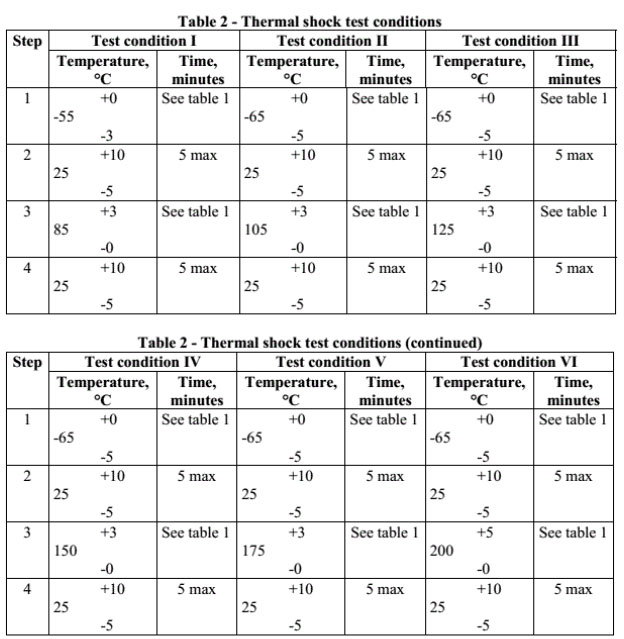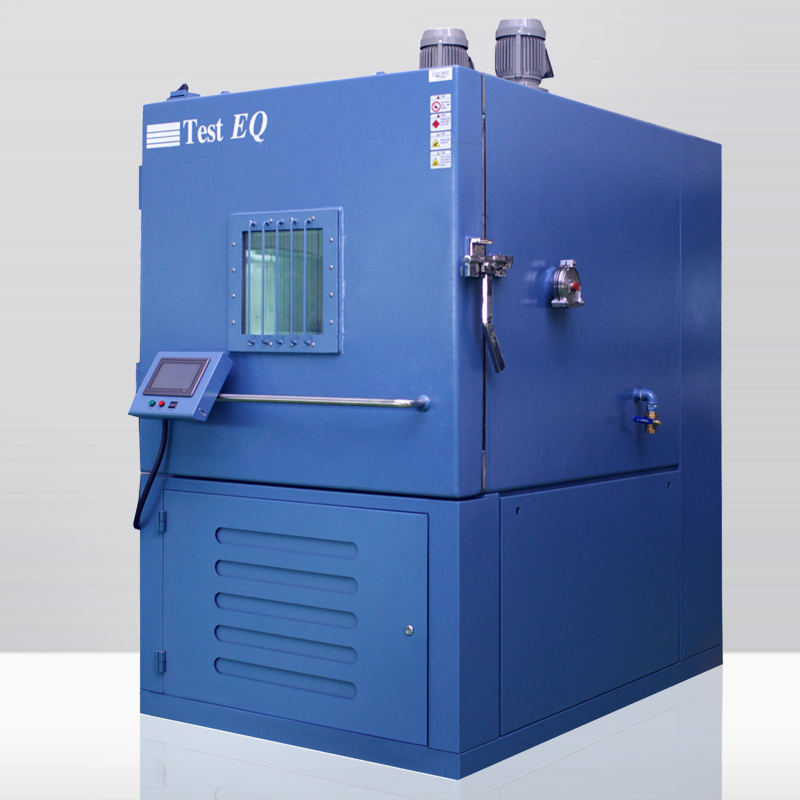Test equipment
2.1.1 Under extreme temperature conditions, one thermal shock chamber or two separate thermal chamber (hot and cold) should be used.
2.1.2 When applicable, a dewar bottle should be used that is large enough to hold a sufficient amount of liquid nitrogen to fully engulf the sample.
2.1.3 The air temperature in the test chamber shall be maintained at each extreme temperature through air circulation and sufficient heat capacity, so that the ambient temperature in the test chamber reaches the specified temperature within 2 minutes after the sample is transferred to the appropriate test chamber.
2.1.4 When using two separate chambers (hot and cold), the specimens in the chamber shall be supported on metal screens or grilles with at least 75% open area.
2.1.5 When transferring samples from one chamber to another or to liquid nitrogen dewar bottles, insulated handling equipment or gloves should be used to minimize direct heat transfer.
Test procedures
1.The installation sample shall be placed in a position relative to the air flow so that the air flow through and around the sample is essentially unhindered. When special installation is required, it should be indicated.
2. The initial measurement shall be carried out before the first cycle, and shall be carried out under standard environmental conditions.
3. Before the sample quality measurement cycle, the total mass of the component to be measured should be determined (if applicable, should cooperate). The mass shall include contacts, sealing plugs, and sample attachments attached to the sample and wire. The weight of any fixture used to hold the specimen in fit conditions shall also be determined. The mass of the sample in Table 1 is the total mass of the components, wires and any fixtures connected to the sample. The wiring quality of the specimens connected in the laboratory (such as polarization voltage, low-level contact resistance measurements, or when testing cable assemblies) should be included in the quality determination.

4. The sample shall be placed in the test chamber according to the regulations. The sample shall meet the conditions specified in Table 2. The first five cycles should run continuously. If more than 5 cycles are required, 25 cycles are recommended. Specify 50 or 100 cycles in the reference document. After 5 cycles, at the end of any full cycle, the test can be interrupted and the sample allowed to return to room temperature before the test is restarted.

.jpg)
5.Final measurement, before the final measurement, the sample shall be restored to thermal stability under standard environmental conditions, unless otherwise specified in the reference document.


